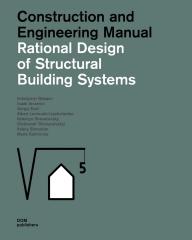This monograph presents the results of theoretical and experimental studies as well as the design and construction features of structural systems with rational parameters. It starts by outlining issues around the topological (bionic) optimization of structures and suggests ways to address them.
The computational compiler underlying the proposed approach incorporates the finite element method and the adaptive evolution method. Thus, this volume outlines new energy principles that speak in favour of the proposed methodology. The solutions presented here were verified experimentally using new methods for testing structures for the effects of force and temperature. The theoretical studies also provide a methodology for assessing the technical condition, durability, and service life of structures.
The book sets out the specific features of the design and construction of systems produced using the proposed approach. New reinforced-concrete, steel-reinforced-concrete, and steel systems, as well as manufacturing and construction technologies, are described in detail. Designs for buildings, structures, and pedestrian and road bridges are shown. Examples of erected structures are cited, and issues with regard to designing large-span suspension systems with rational parameters are considered.
The manual is intended for engineers and researchers dealing with creating, studying, designing, and erecting engineering structures and systems thereof; structural- and civil-engineering teachers and students may also find it handy.

(0 Comentarios)